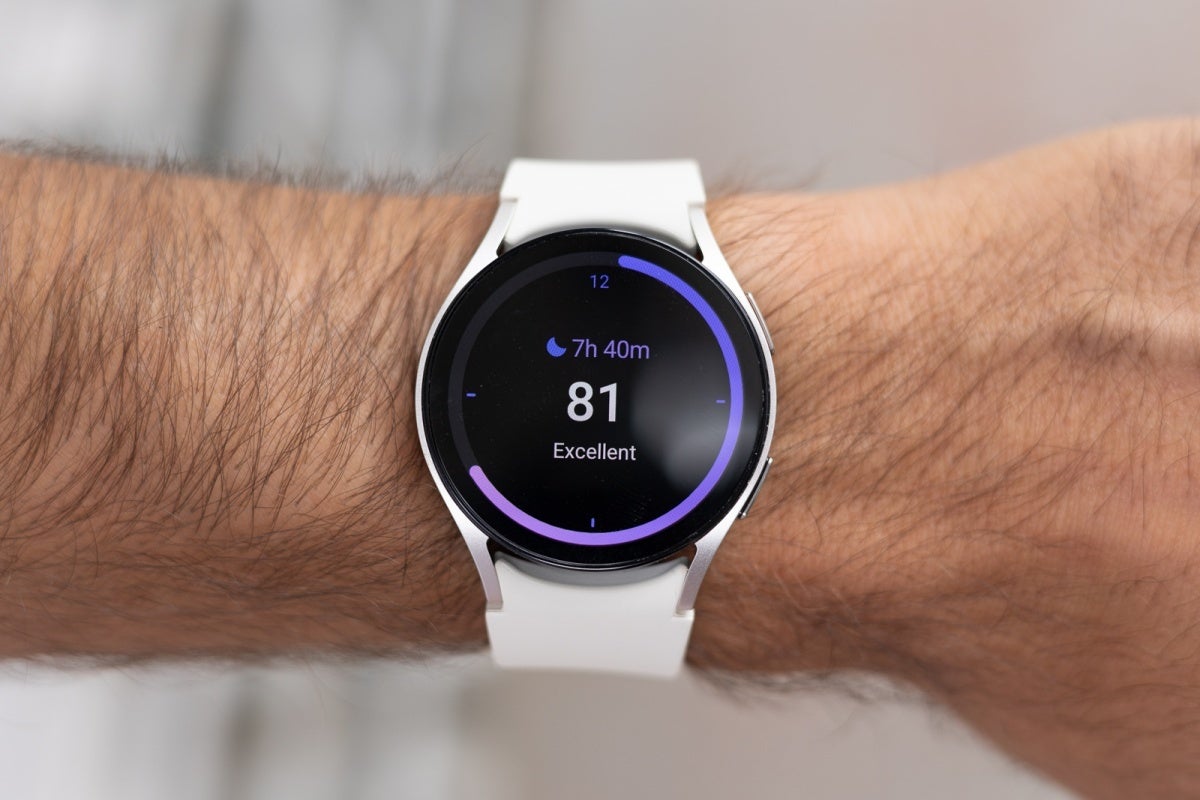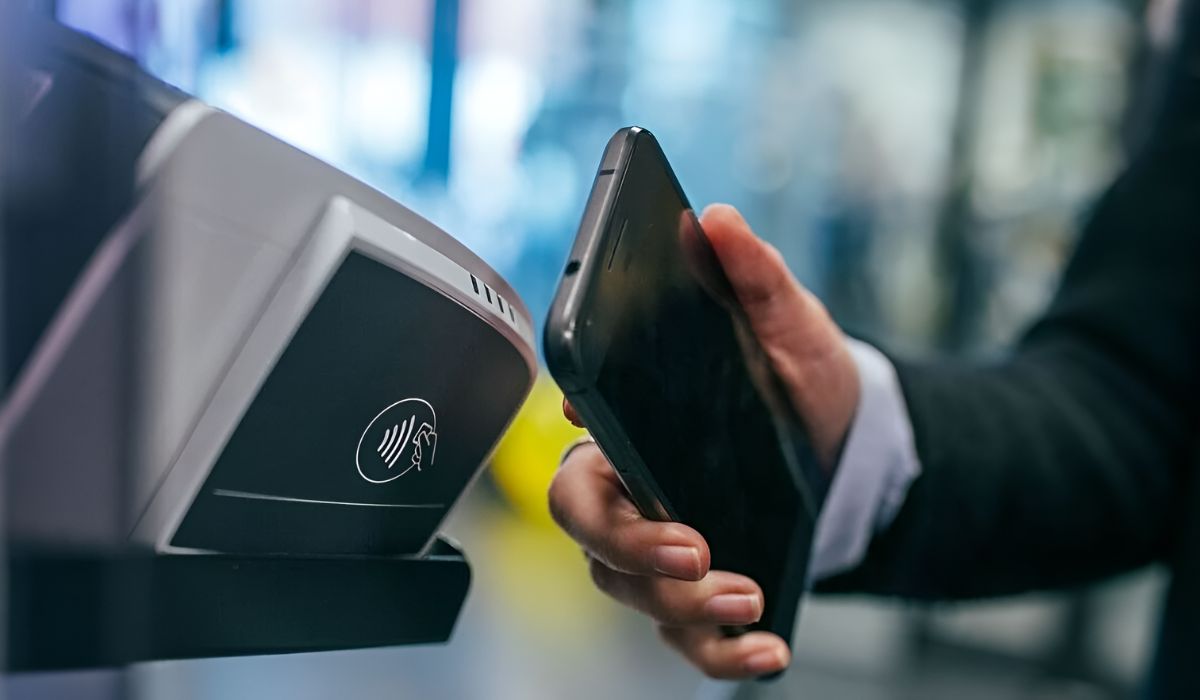Introduction
The rise of smartphones has revolutionized the way we communicate, access information, and navigate our daily lives. In the United States, smartphone ownership has become increasingly pervasive, with a significant portion of the population relying on these devices for various activities. This article explores the current landscape of smartphone ownership in America, provides demographic breakdowns, and examines the factors that influence ownership rates.
With the advent of smartphones, the world has become more interconnected than ever before. These pocket-sized devices offer a multitude of features, such as internet access, messaging apps, social media platforms, and countless other applications that cater to our diverse needs. As a result, smartphones have become indispensable tools, transforming the way we work, communicate, entertain ourselves, and even shop.
In recent years, the ownership of smartphones in America has witnessed a steady increase, as technological advancements have made them more affordable and accessible to a wider range of consumers. Today, it seems almost everyone has a smartphone, from young adults to senior citizens, cutting across various demographics.
This article aims to provide insights into the current state of smartphone ownership in America. By examining the demographic breakdowns of ownership rates, exploring the factors that influence these rates, and comparing ownership rates with other countries, we can gain a comprehensive understanding of the impact smartphones have on our society.
As we delve into this topic, it is important to note that smartphone ownership is not solely influenced by factors such as age or income. Culture, lifestyle, and technological infrastructure also play crucial roles in determining ownership rates. By analyzing these various factors, we can gain valuable insights into the future of smartphone ownership in America.
The Rise of Smartphone Ownership in America
In recent years, the United States has witnessed a remarkable growth in smartphone ownership. The proliferation of these devices can be attributed to several factors, including advancements in technology, affordability, and the increasingly essential role that smartphones play in our daily lives.
Technological advancements have played a significant role in driving the rise of smartphone ownership in America. With each new generation of smartphones, we see improvements in processing power, camera capabilities, battery life, and overall user experience. These advancements have not only made smartphones more appealing but have also made them more accessible to a wider range of consumers.
Another key factor in the rise of smartphone ownership is affordability. In the early days of smartphones, they were seen as luxury devices that were out of reach for many. However, as competition in the market has intensified, prices have become more affordable, allowing a larger portion of the population to afford these devices. This has particularly benefited lower-income individuals and families who may have previously been priced out of the smartphone market.
Furthermore, as smartphones have become increasingly integrated into our daily lives, they have transformed from luxury items to essential tools for communication, information access, and productivity. With the ability to make calls, send messages, browse the internet, and access a vast array of applications, smartphones have become a central hub for our digital activities. From social media to banking, from entertainment to navigation, smartphones have become indispensable companions that we rely on throughout the day.
The COVID-19 pandemic further accelerated the rise of smartphone ownership in America. With lockdowns and restrictions in place, many turned to their smartphones for remote work, online education, virtual socializing, and entertainment. The increased reliance on these devices during challenging times has further solidified their importance and ensured their continued growth in popularity.
Overall, the rise of smartphone ownership in America can be attributed to a combination of technological advancements, affordability, and the increasing indispensability of these devices in our daily lives. As smartphones continue to evolve and become even more integral to our society, we can expect ownership rates to continue to rise, shaping the way we communicate, work, and interact with the world around us.
The Current Landscape of Smartphone Ownership
In today’s digital age, smartphones have become a ubiquitous presence in society, with a large portion of the American population owning and relying on these pocket-sized devices. The current landscape of smartphone ownership in America reflects the widespread adoption and integration of these devices into our daily routines.
Recent data reveals that smartphone ownership in the United States stands at an impressive rate of over 80%. This means that the majority of Americans now possess a smartphone, demonstrating the significant impact these devices have made on our society. With such high ownership rates, it is clear that smartphones have become an integral part of our lives.
One notable trend in smartphone ownership is the shift from feature phones to smartphones. Feature phones, which have limited functionality compared to smartphones, are gradually being replaced as consumers recognize the enhanced capabilities and convenience of smartphones. This shift can be attributed to the increasing affordability and accessibility of smartphones, coupled with the desire to access advanced features and applications.
Furthermore, the current landscape of smartphone ownership also reflects the dominance of certain operating systems. The two major players in the smartphone market – Android and iOS – command the majority of users in America. Android, with its wide range of manufacturers and device options, holds the lion’s share of the market, while iOS, the operating system exclusive to Apple devices, serves as a popular choice for many.
The prevalence of smartphones has also shaped our online habits and consumption patterns. With smartphones, individuals can access the internet, browse social media platforms, stream videos, play games, and engage with various online activities with ease. This has led to a significant increase in mobile internet usage as smartphones have become the primary device for online interactions.
Moreover, the current landscape of smartphone ownership showcases the continued growth of smartphone usage in different age groups. While younger individuals have embraced smartphones at a higher rate, older generations are also increasingly adopting these devices. As older adults recognize the benefits of staying connected, accessing information, and utilizing various apps, they too are joining the smartphone revolution.
Overall, the current landscape of smartphone ownership in America highlights the widespread adoption and integration of these devices into our lives. With high ownership rates, a shift towards smartphones, dominance of certain operating systems, and increasing smartphone usage across different age groups, it is evident that smartphones have become a fundamental tool in our modern society.
Demographic Breakdowns of Smartphone Ownership
Smartphone ownership in America cuts across various demographic groups, providing valuable insights into the factors that influence ownership rates. By examining these breakdowns, we can gain a deeper understanding of who owns smartphones and how different groups engage with these devices.
Age is a significant factor when it comes to smartphone ownership. Younger generations, such as millennials and Gen Z, have the highest rates of smartphone ownership. These digital natives grew up in an era where smartphones were already prevalent, and they have seamlessly incorporated these devices into their lives. On the other hand, older generations have lower ownership rates, although they are increasingly catching up as smartphones become more user-friendly and tailored to their needs.
Income also plays a role in smartphone ownership. Higher-income individuals tend to have higher ownership rates, as they have the means to afford the latest models and data plans. However, as smartphones have become more affordable, ownership rates among lower-income individuals have seen significant growth. The availability of budget-friendly smartphone options and prepaid plans has made smartphones accessible to a wider range of consumers, bridging the digital divide to some extent.
Education level is another contributing factor to smartphone ownership. Individuals with higher levels of education are more likely to own smartphones compared to those with lower levels of education. This could be attributed to several factors, including increased access to information and technology literacy among individuals with higher education.
Furthermore, there are significant differences in smartphone ownership rates based on race and ethnicity. While ownership rates have been steadily increasing across all racial and ethnic groups, there are still disparities. Asian Americans and White Americans tend to have higher ownership rates compared to African Americans and Hispanic Americans. These disparities may be influenced by factors such as socioeconomic status, cultural differences, and historical disparities in access to technology.
Interestingly, there is also a gender difference in smartphone ownership, although the gap has narrowed in recent years. Previously, men had higher ownership rates, but now the ownership rates between men and women are relatively close. This suggests that smartphones have become equally essential tools for both genders.
Overall, the demographic breakdowns of smartphone ownership highlight the influence of age, income, education level, race, and gender on ownership rates. As smartphones continue to become more accessible and integrated into our lives, it is essential to consider these demographic factors to ensure equitable access and bridge any existing gaps in smartphone ownership.
Factors Influencing Smartphone Ownership Rates
Several factors contribute to the varying rates of smartphone ownership among individuals and communities. Understanding these factors provides valuable insights into the drivers behind ownership rates and helps to identify the barriers that may exist in certain populations.
Technological advancements and affordability are two key factors that influence smartphone ownership rates. As smartphone technology continues to evolve and improve, with new features and functionalities being introduced regularly, individuals are often motivated to upgrade their devices to keep up with the latest trends. However, the cost of smartphones can be a significant barrier for some individuals, particularly those with lower incomes. The availability of budget-friendly smartphones and flexible payment plans has helped mitigate this barrier and has contributed to increased ownership rates across various income levels.
Internet connectivity and infrastructure also play a critical role in smartphone ownership rates. Individuals in areas with limited or inadequate internet access may be less likely to own smartphones due to the limited utility of these devices without a reliable internet connection. Rural areas, for example, may have lower ownership rates compared to urban areas where internet connectivity is more readily available. Efforts to improve internet infrastructure in underserved areas can help bridge the gap in smartphone ownership rates.
Marketing and advertising strategies employed by smartphone manufacturers and service providers also influence ownership rates. Through effective marketing campaigns, smartphone companies create demand and generate interest in their products. Promotional offers, trade-in programs, and exclusive deals can incentivize individuals to purchase new smartphones or upgrade their existing devices. Additionally, carrier subsidies and affordable data plans can make owning a smartphone more accessible and affordable for a broader range of consumers.
Social factors also come into play when considering smartphone ownership rates. Peer influence and societal norms can shape individuals’ desire to own a smartphone. The “keeping up with the Joneses” mentality often leads individuals to feel the need to own a smartphone to fit in or stay connected with their social circles. Additionally, the increasing importance of smartphones in education and the workplace further drives ownership rates, as these devices are often essential for staying connected, accessing information, and completing tasks.
The availability and accessibility of smartphone apps and services can also impact ownership rates. The wide range of applications and services available on smartphones, such as social media platforms, utility apps, and entertainment apps, cater to various needs and interests. The appeal and convenience of accessing these apps on a smartphone can influence individuals to own and utilize these devices.
Overall, technological advancements, affordability, internet connectivity, marketing strategies, social factors, and the availability of apps and services all contribute to the varying rates of smartphone ownership. By understanding these factors, stakeholders can develop strategies to increase accessibility, bridge the digital divide, and ensure that smartphones are more inclusive and beneficial to all individuals and communities.
The Impact of Socioeconomic Factors on Smartphone Ownership
Socioeconomic factors have a significant impact on smartphone ownership rates, shaping the accessibility and adoption of these devices among different socioeconomic groups. Income, education, and employment status play crucial roles in determining smartphone ownership rates and the level of engagement with these devices.
Income is a key determinant of smartphone ownership. Higher-income individuals tend to have higher ownership rates due to their ability to afford the cost of smartphones and associated data plans. They are more likely to purchase the latest models with advanced features and capabilities. On the other hand, lower-income individuals may face financial barriers to smartphone ownership, as the cost of devices and ongoing expenses can be a significant burden. However, as smartphones become more affordable and the availability of budget options increases, ownership rates among lower-income individuals have been on the rise.
Education also plays a role in smartphone ownership rates. Individuals with higher levels of education are more likely to own smartphones compared to those with lower levels of education. Education equips individuals with the digital skills and awareness necessary to fully utilize and appreciate the benefits of smartphones. Additionally, the link between education and employment can influence ownership rates, as individuals in higher-paying jobs may have greater financial resources to invest in smartphones.
Employment status also impacts smartphone ownership rates. Those who are employed, particularly in industries that require digital connectivity and communication, are more likely to own smartphones. Smartphones are essential tools for staying connected, accessing work-related information, and facilitating productivity. Additionally, smartphones often play a role in job searching, networking, and even remote work, making them indispensable for those in the workforce.
Socioeconomic factors can create disparities in smartphone ownership rates. Individuals from low-income backgrounds, with lower levels of education or unemployed, may face barriers that hinder their access to smartphones. These disparities can perpetuate the digital divide, limiting opportunities for communication, information access, and participation in the digital economy.
Efforts to bridge the socioeconomic gap in smartphone ownership involve various initiatives. Increasing affordability through subsidies, payment plans, and discounted smartphone options can help lower-income individuals overcome financial barriers. Educational programs that promote digital literacy and provide resources for individuals to develop digital skills can empower individuals from lower socioeconomic backgrounds to utilize smartphones effectively. Additionally, raising awareness of the benefits and opportunities associated with smartphone ownership can help encourage individuals to overcome any hesitations or misconceptions they may have.
The impact of socioeconomic factors on smartphone ownership highlights the importance of addressing inequalities and ensuring equitable access to these devices. By closing the digital divide, we can empower individuals from all socioeconomic backgrounds to benefit from the educational, economic, and social opportunities that smartphones offer.
Comparing Smartphone Ownership Rates with Other Countries
Smartphone ownership rates vary significantly across different countries, reflecting cultural, economic, and technological factors. Comparing smartphone ownership rates between countries provides valuable insights into the global landscape of smartphone adoption and usage.
South Korea is often cited as one of the countries with the highest smartphone ownership rates in the world. With its advanced mobile infrastructure, tech-savvy population, and a strong culture of technological innovation, it is estimated that over 95% of the population in South Korea owns a smartphone. The prevalence of smartphones in South Korea is not only a reflection of the country’s technological prowess but also underlines the importance of smartphones in various aspects of daily life, including communication, entertainment, and e-commerce.
Scandinavian countries such as Norway, Sweden, Denmark, and Finland also boast high smartphone ownership rates. These countries are known for their high standard of living, advanced digital infrastructure, and early adoption of technology. Ownership rates typically exceed 90% in these countries, with smartphones playing a central role in how people interact, access information, and carry out day-to-day activities.
In the United States, smartphone ownership rates have steadily risen, with estimates suggesting that over 80% of the population owns a smartphone. While this figure is lower compared to countries like South Korea or Scandinavian nations, it still reflects a significant level of adoption and integration of smartphones into American society. Factors such as affordability, technological advancements, and the widespread availability of mobile networks contribute to the high ownership rates in the U.S.
In contrast, developing countries often have lower smartphone ownership rates. Factors such as lower levels of income, limited access to technology, and fewer resources for infrastructure development can impede widespread smartphone adoption. However, smartphone ownership rates in these countries are growing rapidly as devices become more affordable and internet access expands. Countries like China, India, and Brazil have seen substantial increases in smartphone ownership, driven by a combination of economic growth and affordable device options.
It’s important to note that smartphone ownership rates are not the only metric to consider when comparing countries. Factors such as internet penetration, mobile data usage, and the types of apps and services used on smartphones also provide insights into the digital landscape of each country. Additionally, cultural and social factors, such as the importance placed on mobile technology and digital connectivity, contribute to variations in ownership rates.
Overall, comparing smartphone ownership rates with other countries highlights the global reach of smartphone usage and its impact on societies worldwide. As technology continues to advance and become more accessible, smartphone ownership rates are expected to rise further, shaping how individuals and communities engage with the digital world.
The Future of Smartphone Ownership in America
The future of smartphone ownership in America is poised for continued growth and transformation, as advancements in technology, shifting demographics, and evolving consumer habits shape the landscape of mobile devices.
One of the key drivers of future smartphone ownership is the continuous evolution of technology. Each new generation of smartphones brings improvements in processing power, camera capabilities, battery life, and other features. As technology continues to advance, smartphones will likely become even more powerful, offering innovative functions and seamless integration with other devices and technologies. This will further solidify smartphones’ role as essential tools for communication, productivity, entertainment, and more.
Changing demographics will also play a significant role in the future of smartphone ownership. As younger generations, who are already avid smartphone users, grow older, we can expect ownership rates to remain high. However, as older generations become more comfortable with technology and recognize the benefits of smartphones, they are likely to increase their ownership rates as well. This shift will lead to a more widespread and diverse range of smartphone users across all age groups.
The rise of 5G networks will also impact smartphone ownership in the future. With the deployment of 5G technology, users will experience faster internet speeds, reduced latency, and enhanced network capabilities. This will enable more advanced applications and services on smartphones, such as augmented reality, virtual reality, and advanced gaming. The increased capabilities and seamless connectivity that 5G provides will likely drive more individuals to invest in smartphones capable of harnessing these technologies.
Furthermore, the integration of smartphones with other emerging technologies will shape the future of ownership. As the Internet of Things (IoT) expands, smartphones will serve as a centralized hub for controlling and monitoring connected devices in our homes, vehicles, and even wearables. Additionally, advancements in artificial intelligence will result in smarter virtual assistants and personalized experiences on smartphones, transforming the way we interact with our devices and access information.
The future of smartphone ownership will also be influenced by sustainability initiatives. As consumers become more environmentally-conscious, there is a growing demand for eco-friendly and sustainable products, including smartphones. Manufacturers are increasingly focusing on creating smartphones that are designed to be more durable, repairable, and recyclable, reducing e-waste and promoting a more sustainable approach to technology ownership.
Overall, the future of smartphone ownership in America looks promising and exciting. Advancements in technology, changing demographics, 5G connectivity, integration with emerging technologies, and sustainability initiatives will continue to shape the smartphone landscape. As smartphones become even more powerful, versatile, and accessible, they will remain essential devices that connect us to the digital world and empower us in our daily lives.
Conclusion
The rise of smartphone ownership in America has transformed the way we communicate, access information, and navigate our daily lives. With over 80% of the population owning a smartphone, these pocket-sized devices have become ubiquitous in our society.
We examined the factors that have driven the rise of smartphone ownership, including technological advancements, affordability, and the essential role that smartphones play in our daily routines. We explored the current landscape of smartphone ownership, noting the shift from feature phones to smartphones, the dominance of certain operating systems, and the increasing prevalence of smartphones across different age groups.
Demographic breakdowns highlighted how factors such as age, income, education, race, and gender influence smartphone ownership rates. Moreover, we discussed the impact of socioeconomic factors on ownership rates and the efforts needed to bridge the digital divide and ensure equitable access to smartphones.
Comparisons with other countries revealed the variations in smartphone ownership rates globally, showcasing the rapid expansion of smartphone adoption in developed nations and the increasing penetration in developing countries.
Likewise, we explored the future of smartphone ownership, anticipating further advancements in technology, shifting demographics, the proliferation of 5G networks and their impact on smartphone capabilities, as well as the integration of smartphones with emerging technologies. We also acknowledged the growing importance of sustainability initiatives in shaping the future of smartphone ownership.
In conclusion, smartphones have become indispensable tools that have reshaped how we interact with the world around us. As ownership rates continue to rise, it is important to address barriers to access, promote digital literacy, and ensure that smartphones are inclusive and sustainable. The future of smartphone ownership looks promising, with continued technological advancements and evolving user needs shaping the landscape of mobile devices and further integrating smartphones into our daily lives.

























